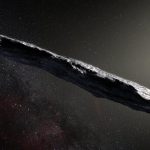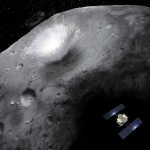From discovery to data: How astronomers track near-Earth asteroids0
- From Around the Web, Space
- July 31, 2018
Once an asteroid has been identified, how do we know if it’s a threat?

Once an asteroid has been identified, how do we know if it’s a threat?

For centuries, humans have extracted minerals from the Earth with reckless abandon, but it’s only a matter of time before our desire for gold, platinum, iron, tungsten, and other useful ores will exceed our planet’s ability to provide them.

An asteroid first discovered last year has now been confirmed to be one of only four equal mass binary systems ever detected near Earth.

On Saturday, June 23, 2018, a team of experts from Botswana, South Africa, Finland and the United States of America recovered a fresh meteorite in Botswana’s Central Kalahari Game Reserve (CKGR).

Asteroids could have more materials on them then we thought.

Japan’s Hayabusa2 spacecraft plans to strike the asteroid creating a crater and dislodging rocks for analysis

Ever since space scientists first spotted the odd, cigar-shaped object known as 1I/‘Oumuamua in the sky, they have been debating what it is exactly. Suggestions have included an asteroid, a comet and even alien spaceship. Now a study, published in Nature, suggests it may actually be a comet – but an unusual one.

The Hera spacecraft mission, proposed by the European Space Agency, is heading to a binary asteroid to support NASA’s planetary defense plan against potential asteroid collision.

Hayabusa-2 will hover above its target and release four landing probes before touching down to collect samples to return to Earth.

Images and video of the daylight meteor seen over Russia on June 21. The small asteroid exploded in the air; fragments may have reached Earth. Plus … why are so many large meteors seen over Russia?